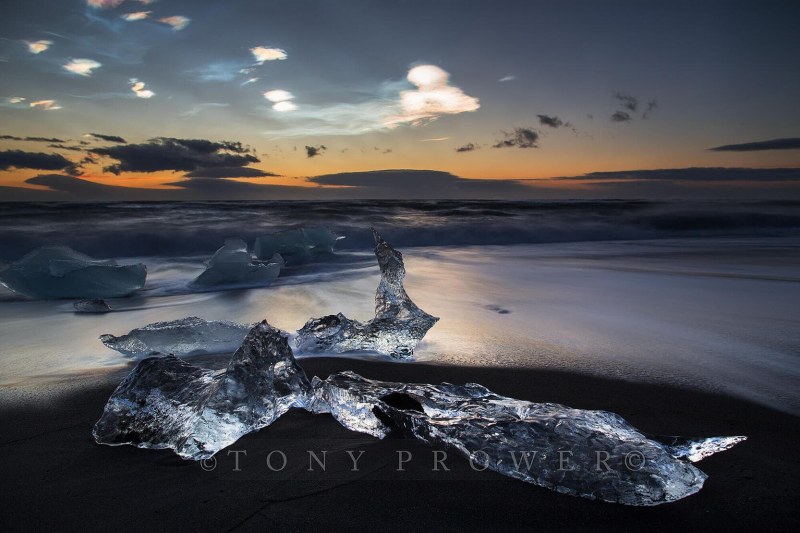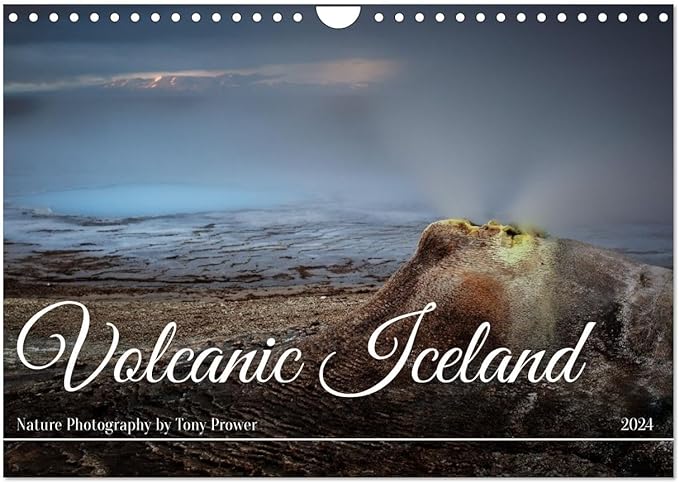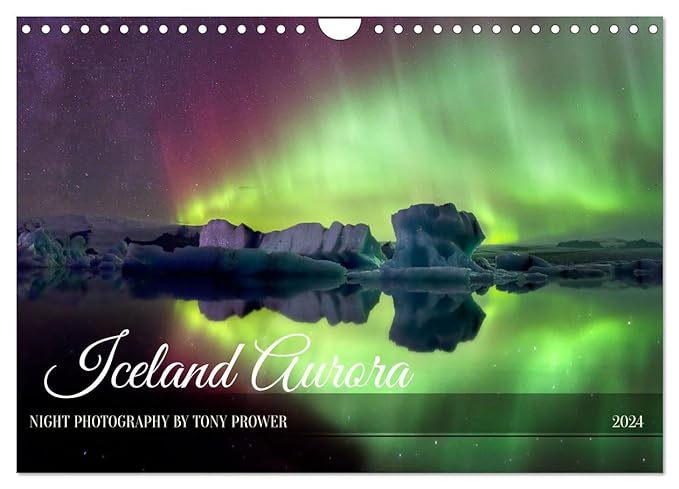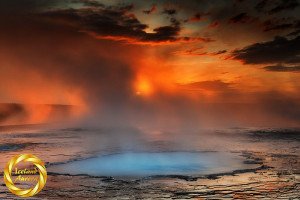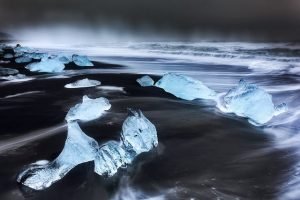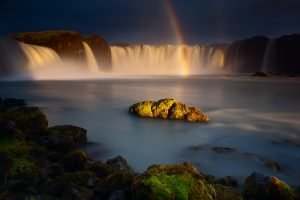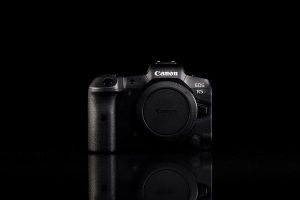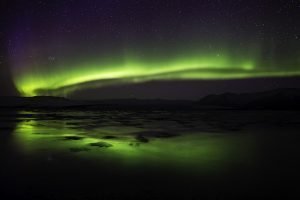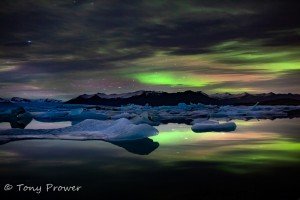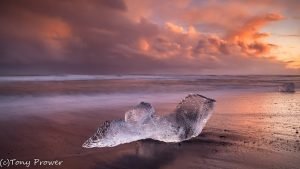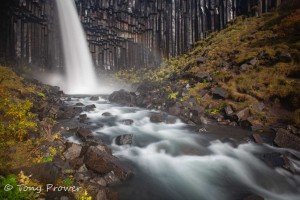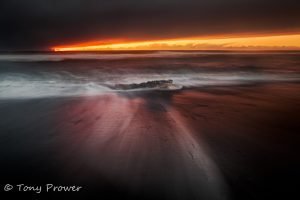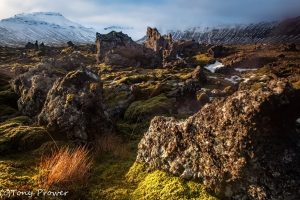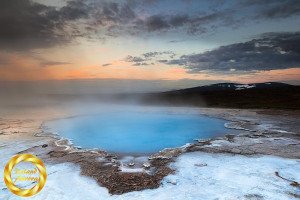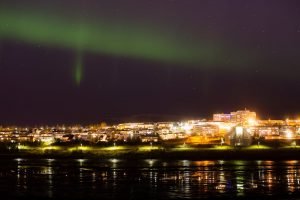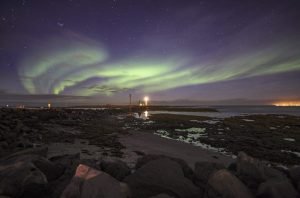Arctic Winter
This was a January morning in the South East of Iceland. This was no ordinary morning for our 5 day workshop because the sky was filled with a special kind of cloud. Nacreous clouds are ice particles high up in the atmosphere that catch sunlight long before sunrise. They are also known as Polar stratospheric clouds (PSCs) or Mother of Pearl clouds because they glow with a variety of pearl like colours.
Bad Omens
Mother of pearl clouds used to be a bad omen for the Vikings. They saw them as a sign of a very harsh Winter. Indeed they can only be observed near the Arctic circle. I have only seen them 4 times. Each time was mid Winter. This was the only time I had seen them in he Southern sky – and we were on the way to the ice beach.
Ozone Layer
Modern views sync them global warming and they are apparent artefacts of the hole in the Ozone Layer. The Viking stories tell us that this is either questionable, or that the hole in the ozone layer has been around for a 1000 years or more. The Viking stories (Icelandic sagas) also tell us that global warming is a natural pattern as the shrinking glacier behind us was a hell of a lot smaller 1000 years ago.
Don’t forget to share!!These are fairly difficult to expose correctly. They are bright spots in a fairly dark sky, so the scene has to be under-exposed. After a few hand held test shots, I established that the sky needed to be a full stop under exposed to preserve the highlights in the clouds.
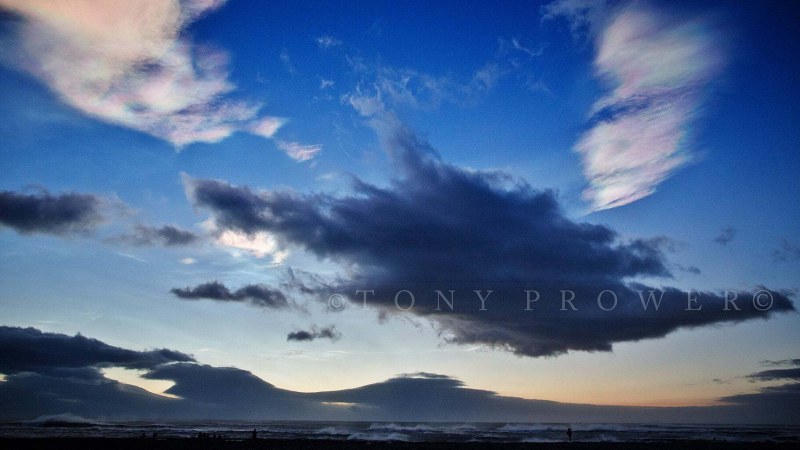
There is no need for any exposure tricks in this scene. The people work well as silhouettes. This is probably the best capture of the sky. After this I has some work to help my workshop guests before getting into compositions for myself.
Thanks for Reading!!South Iceland Tours
To the left
A small crowd of people gather on the ice beach under the mother or pearl clouds. There is movement because this was a long exposure Magic Cloth photo. The photographer in the image appears without movement.
To the right
My wonky seascape vertical. Normally this would end up in the recycle bin, but this has something worth keeping. I find it easy to forgive the massively sloping horizon. It is a sign of my urgency to start shooting these rare clouds with an ce beach foreground.
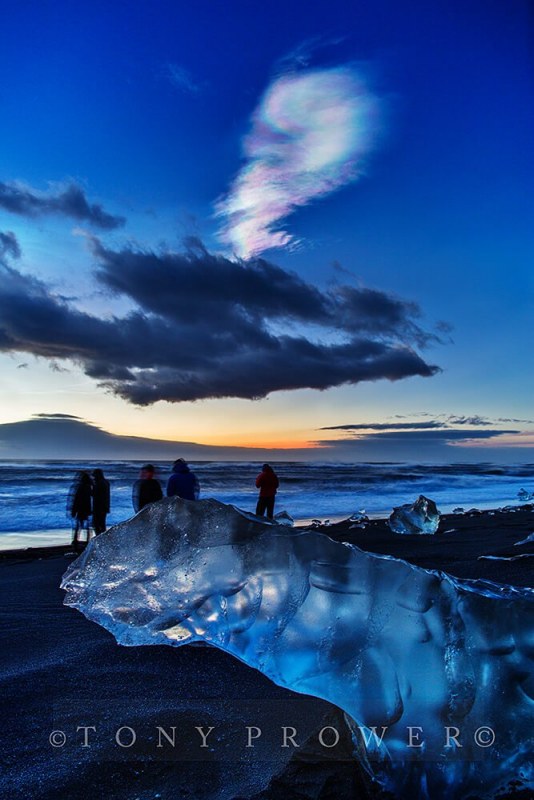
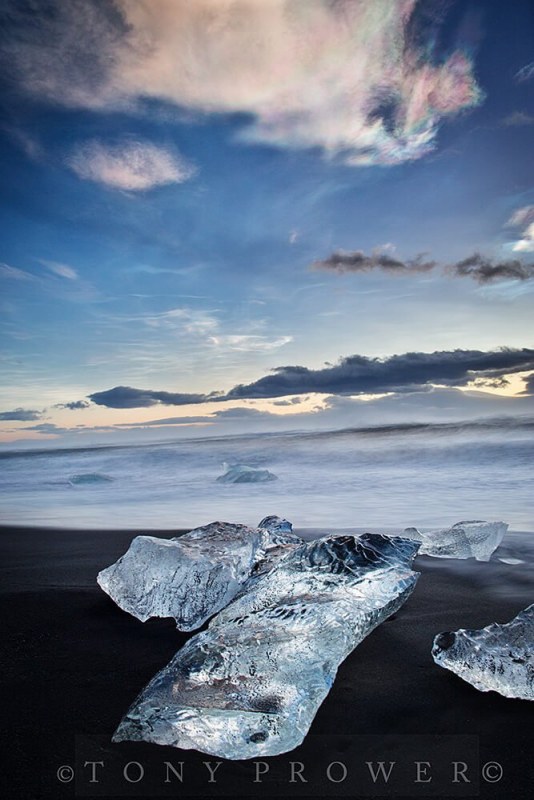
Magic Cloth
The Magic cloth technique was used for both these shots. You will either love or hate the movement of the people in the first shot, just as you may love or hate the wonky horizon in the second. But my point is that the exposure control with the magic cloth allowed severe under exposure on the top of the image – where the clouds were. Then a slight over exposure on the foreground ice to give that wonderful detail and clarity.
Equipment:
Be sure to choose the right equipment for Long Exposure photography. A lens with a big too large, such as Nikon’s 14-24mm. The lens is perfect for long exposures at night, but dark filters for day time Neutral Density photography becomes complicated.
Dark Filter: (not at night, only in daylight)
I suggest screw-on filters for rainy weather conditions.
sturdy Tripod:
I have to get low down for foreground intimacy so folding legs are really nice features to look out for choosing your tripod. Stabilize your tripod so it becomes strong. Moving the Magic Cloth can introduce vibrations. A solid tripod is essential for top quality long exposure photography.
Don’t raise the centre column to full height unless it is absolutely necessary. The centre column is the least stable part of the set up.
If your tripod has a hook between the legs, hang things from it to provide better strength. Often professionals carry a special harness to place rocks and stones to give a better strength which will steady the tripod well and is great for long exposure work.
Remote release:
Shutter speeds can be longer than the 30 sec the camera will let you do. Having a Remote release (sometimes called “infra red Shutter release) will allow you to open the shutter: as long as your battery pack allows.
Black cloth:
Pick a big cloth like a large sock, or the same size black card. Should be able to cover the whole surface of the lens. Better to be Dark. A non-reflective colour is preferable. You can normally make a straight edge out of any cloth.
What to do:
Camera settings
Start with a dark filter or darkness for a to acheive a long exposure, then over expose the image by 2 – 3 stops.
Exposure time
There is an advantage to a long Exposure time. 2-5 sec requires a fast, but smooth movement to cover the sky within a reflex time. 5-10 sec allows for a controlled exposure of the foreground.
Magic Cloth Movement
Normally, I use very fast downward motion and slow, controlled upward actions.
Camera Gear
Recommended Equipment.
Select the right equipment for long exposure landscape photography. Your camera must be able to take a long exposure and live view is a bonus. A lens that can take filters is also important if you want to do daylight long exposures. Generally, I put my ND filter on when the sun came up and took it off when the sun went down. After lots of experimenting, I decided that a 6-stop ND filter was the most useful, if you camera has good quality higher iso settings.
- Sturdy Tripod – essential for long exposure landscape photography. I recommend Really Right Stuff or GITZO
- Dark Cloth or card (with a straight edge). A plain, dark mouse mat is perfect!!
- A 6 stop – ND filter – Like the B+W 77mm 1.8 ND MRC 106M Filter. 106 indicates 6-stops with B&W system. Other systems will have different numbers.
The ND filter is just to lengthen the exposure. You can get silky waterfalls or nice wave action without having to wait for it to get dark. Like Grads, they come in different strengths. I bought one of these… B+W 77mm 1.8 ND MRC 106M Filter. My advice is to buy a filter for your largest lens and use a Step-Up Ring so you can use the same filter on all your lenses.
Canon EF 24mm f/1.4L II USM
Focal length – 17mm – 35mm is the best focal length, super wide has a distortion that makes the straight edge of your cloth wonky. Choose a lens with a large front element with room to move the cloth around.
Canon 5D mark IV
perfect for Magic cloth photography!
- Simple features and total manual mode
- Great live view can see auroras before humans!
- Essential features can be changed with external buttons and dials.
